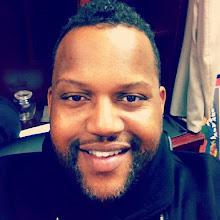 A powerful collection of works by some of the leading African-American artists is on display at the Arts Council of Fayetteville/Cumberland County.
A powerful collection of works by some of the leading African-American artists is on display at the Arts Council of Fayetteville/Cumberland County.The exhibit, called “Distinguish Visions, Timeless Traditions,” came about when Calvin Mims, art services coordinator for the council, discovered that a number of art collectors in town have works of some of the nation’s most important black artists. They allowed the Arts Council to borrow their pieces.
I have chosen to focus on the late Dr. John Biggers, whom I admire. I interviewed him several times. He visited here occasionally because his wife, Hazel, is a native of Fayetteville.
Dr. Biggers was born in Gastonia in 1924. His grandmother had been a slave. As a boy, he helped his mother, a laundress, by rising early to build fires under large black pots of water. As a teenager, he was up early to light furnaces at the high school he attended. He said this work influenced his paintings the rest of his life.
In 1993, Biggers showed his work at the Fayetteville Museum of Art. While here, he generously gave his time to talk to young art students from local colleges.
Biggers attended Hampton Institute in Hampton, Va. In 1943, he was featured in an exhibit titled “Young Negro Art” at the Museum of Modern Art in New York. In 1949, he moved to Houston to establish the art department at Texas Southern University, where he worked as a professor for more than 30 years.
Biggers said the greatest influence on his life came in 1957 when he received a UNESCO fellowship to visit Africa. It changed his way of thinking and of how he created art.
His drawings and paintings centered on the African and African-American traditional experiences from then on.
Biggers retired from teaching in 1983 to devote full time to his art. It is said that he always treated his subjects with dignity.
Much of his work deals with black women and their heroic roles in family life. In a 1993 interview for a show at the Fayetteville Museum of Art, he had high praise for women as the ones who first domesticated animals, “women who made the first calendars, women as providers, the earth mothers, goddesses of the sky. The role of women as keepers of the environment, the mother figure giving life and nourishment.”
Staff writer Melissa Clement can be reached at clementm@fayobserver.com or 486-3528.













